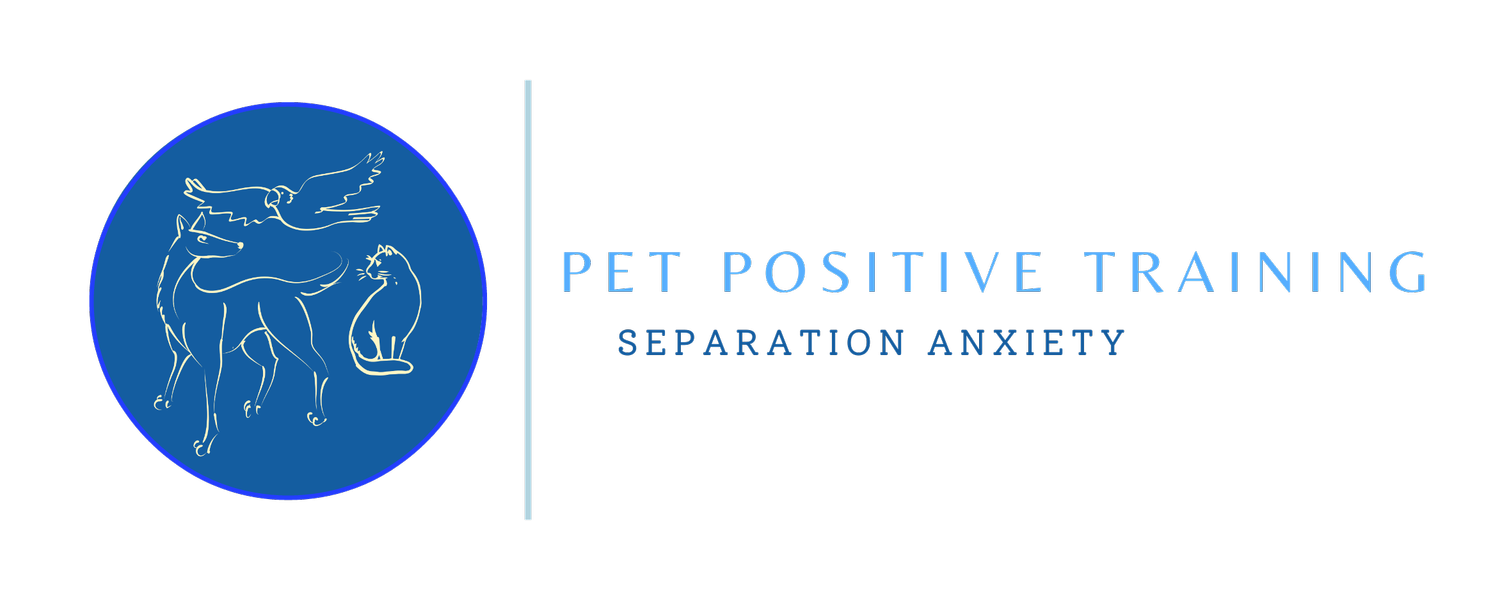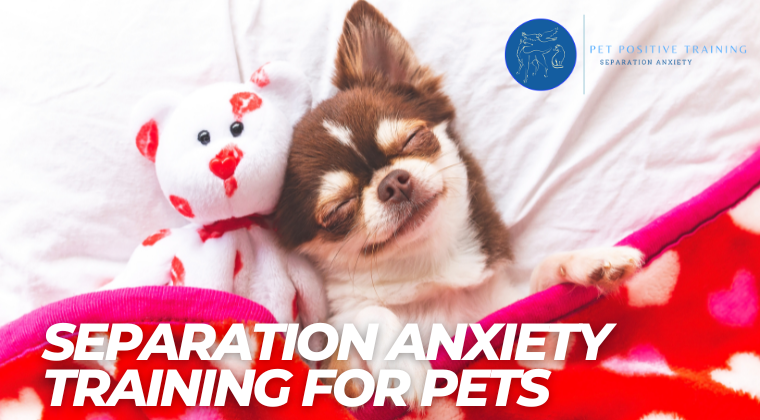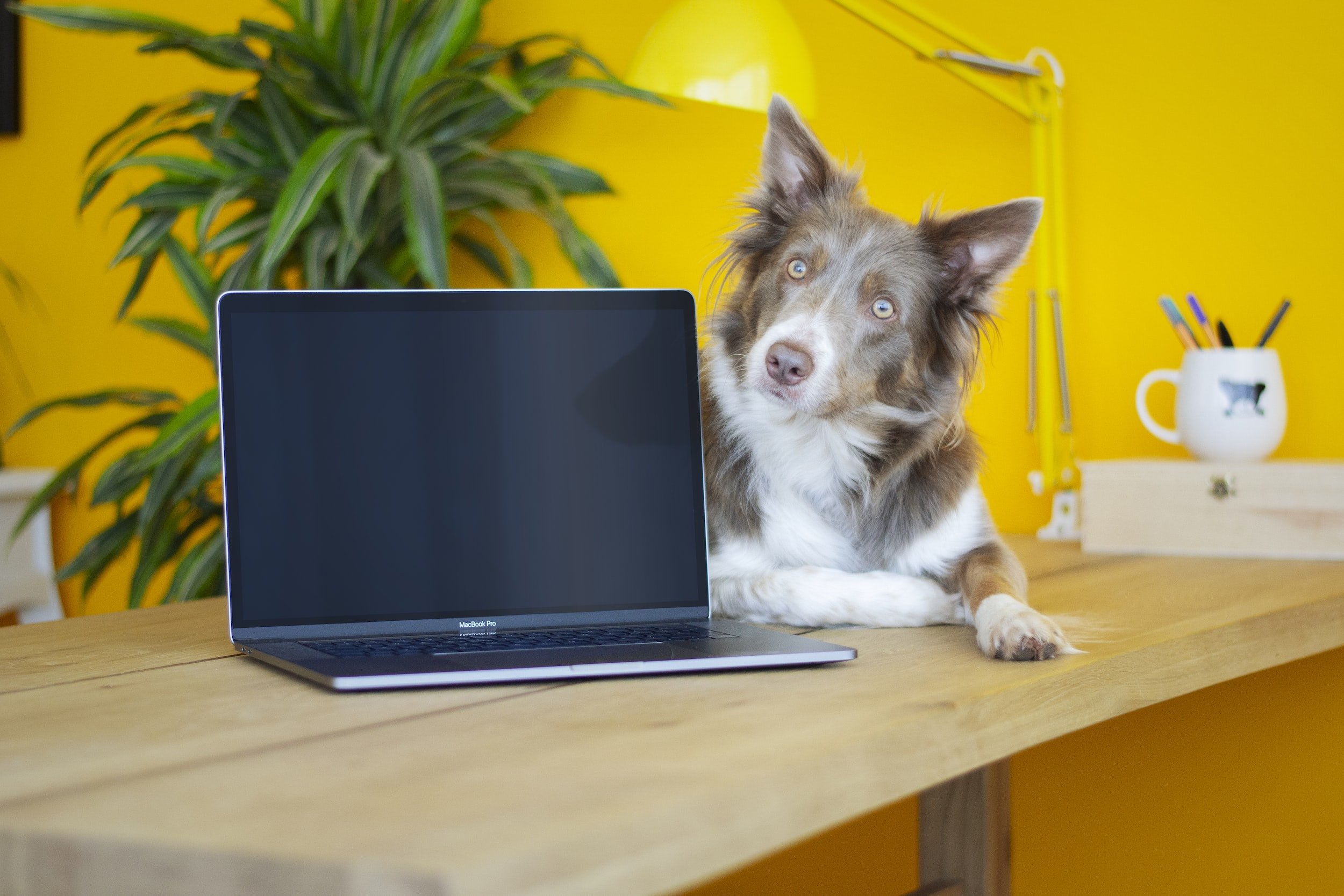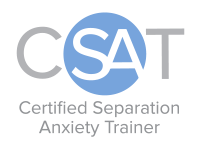Treating separation anxiety changes lives
Liz Fisher, CPDT-KA, CSAT
Dog Separation Anxiety Trainer
Work with a dog separation anxiety specialist today!
When Vigo the dog started, he would panic once he was left alone for 18 seconds.
Now he can lounge on the couch for hours while his people go out to dinner or to work.
The Basics of Dog Separation Anxiety Training
Hear from me, Liz Fisher, about how dog separation anxiety training works when you have a professional trainer in your corner who tailors a unique plan for you and your dog.
Testimonials
-

Vigo, Dani, and Adam
“We have loved working with Liz to help our dog Vigo overcome isolation anxiety. Before starting training with them, we had tried months of unsuccessful anxiety training on our own. Vigo was seemingly doing worse the more we tried to do on our own. Liz was responsive and flexible to work with our schedules. Booking and communicating was all easily managed online. We worked exclusively online together and were able to exceed our goals for Vigo and our family. With their guidance, clear instructions, and moral support, we made progress every single week of training! Liz was attentive and taught us what to look out for to make sure Vigo felt safe and happy. When we first started training, Vigo would be OK for 18 seconds and would be super alert waiting for us. We can now leave him for hours and he is relaxed. We can leave the house without the added stress and can enjoy our time out knowing he’s calm. Thank you, Liz for training all three of us!”
-

Ash, Shelli, and Bryan
“Our dog has crippling separation anxiety. Liz gave us the tools we need to slowly work on it. She held our hands through the entire process and even helped us set up our own long-term training goals. She is a wonderful trainer and really worked with us to personalize a plan when all of the usual techniques simply did not work on our unique dog. Liz genuinely cares about all of her training subjects and really wants them to succeed.”
-
Bowie and Cristina
“We've been working with Liz since the pre-pandemic days, when she taught us polite play skills in a doggy socialization group. The warmth, patience, appreciation for my Bowie's personality, and deep knowledge of canine behavior that Liz showed in person have translated completely to the online platform. Most importantly, her expertise in separation anxiety has been life-changing for my little guy (and really educational for me!). Since working with Liz, Bowie's comfort level while being left alone has gone up significantly. I see progress every week, I know we're in good, caring hands, and I have no doubt that we'll get to our goals with Liz's guidance!”
After Your Initial Assessment
-

Foundations Module 1
Start your separation training off right with 4 consecutive weeks of foundation practice and education.
Your dog builds their comfort with some baby steps while we gather as much detailed behavior and body language information as possible along the way.
$899
-

Foundations Module 2
Continue to learn about your dog, missions writing, and what our data can tell us about your dog’s training needs!
We establish your dog’s specific body language of note if we haven’t already and decide if we need to change tack at all to help your dog learn to relax.
$899
-

Foundations Module 3
Next up, more independent mission writing with feedback from Liz. This module includes 2 special sessions to talk through questions and specifics in place of 2 assessments.
Learn about the long-term picture of training when you achieve longer duration and work toward real-life situations.
$899
-

Beyond the Foundations
Finished with the Foundation Modules? You have some options for your next steps!
Liz may recommend specific options for you and your dog, you can check out the possibilities here!
Looking for a more affordable option?
Check out the lower-cost Dog Separation Anxiety Training Course.
This $500.00 course is my effort to provide the necessary skills and education for pet parents to complete self-directed separation anxiety training.
Our course still includes one-on-one help and feedback from me, Liz, and gets you ready to train independently as quickly as possible.
Following the course you will have lifetime access to the course materials, the associated community, as well as a unique appointment type for check-in sessions me. I don’t disappear- I am here to hold your hand along your training journey!
Is separation anxiety training right for you?
Signs and Symptoms of Separation Issues
When you leave a dog with separation issues alone, they may show some or many of these behaviors:
• Barking, Howling, and Whining
• Destruction like Chewing, Digging, or Scratching rugs, doors, or couches
• Pacing or Restlessness
• Scratching or Jumping at crates, gates, doors, or windows
• Excessive drooling or sweaty paw prints
• Refusing to eat until you return home
• Eating Excessively (like stress-eating a tub of ice cream)
• Pooping or peeing on the bed, in the crate, or in the house
• Escaping
• Trembling
• And more… every dog may express their anxiety a little differently
To check, you can set up a camera to watch your dog while you are away - make sure it records sounds as well as video.
If you are seeing any of these or are unsure - then separation anxiety training may be right for you and an Initial Separation Assessment for your dog is a great place to start.
If you find yourself asking how to stop your dog barking all day or how to help your dog feel safe when alone: This training is for you.
I am based in Scarborough, Maine near Portland, Maine.
I was born, raised, and taught to compassionately train animals in Maryland, DC, and Virginia. Now I have served up and down the east coast and can help anyone worldwide.
Maine
New Hampshire
Virginia
Maryland
Washington, DC
West Virginia
North Carolina
Anywhere! Separation anxiety training is virtual so I can help anyone in the world.
What to expect in dog separation anxiety training
Weekly Time Commitment: 3 to 4 hours weekly
During a Dog Separation Anxiety Training Program package we meet live on Zoom once weekly for a 1-hour reassessment.
Over the course of every week in between Zoom sessions, you are assigned up to four 30-40 minute “missions”, or practice sessions. I write each step-by-step mission individualized to your dog and your unique situation. You take behavior and data notes from your missions and submit them back to me.
Other Training Commitments:
Suspending absences other than practice sessions especially in the early months of separation treatment. To learn more about this check out the blog: Creative Ways to Suspend Absences
Committing to months or more of protocol - for lasting results and treating the root of the problem.
FAQs
-
When I assess your dog(s), cat(s), or pet(s) and when we practice - we want as natural/normal of a picture as possible. The picture of you leaving them alone. I observe your pet via Zoom so that I get the most accurate picture of what they do and how they are progressing through the training.
Adding a new person into that picture will often change that picture whether it makes a pet more intensely anxious, over-stimulated, or more confused than would be normal.
The good news is that this means I can help anyone worldwide get relief for their pets and families.
All you need is an internet connection and 2 devices - one with a camera and Zoom capability and one that can text, chat, or also zoom.
-
I wish I had a crystal ball! This is the most frequently asked question and I absolutely understand the many reasons why we all want to have an amount of time to expect. Every dog, cat, or pet learns how to feel safe at their own unique pace and every protocol for each individual animal really takes a different amount of time.
I have developed my early separation anxiety packages to empower you with as much knowledge and know-how as you need to continue training on your own if you choose to.
I can’t guarantee results, as that would be unethical and every unique living being changes behavior in their own way. But I can guarantee that I will be available and supportive to you for as long as you find it helpful in this protocol.
Your protocol will not be “done” at 4, 8, or 12 weeks but we can build real foundations in that time.
-
During a package we are in regular contact about 5 days every week. I am available for questions, unique and individualized step-by-step practice exercises, and weekly face-to-face live check-ins. Plus I am bringing over 10 years of animal behavior expertise and certification in the most up-to-date and science-based methods to train your dog, cat, or pet.
It may feel like a big ask for some people, but no matter how long you intend to work with me it will be worth it and I will bring all of my knowledge and passion while I care for and guide you and your dog.
-
It is essential to treat separation anxiety incrementally at your dog’s pace. Every individual learner will build comfort at a different pace.
There really is no “faster” way to treat the root of the problem - your dog’s fear or phobia of being alone.This means that a full separation protocol to reach your final absence goals may take months to complete. You do not need to work with me for the full training to completion since I teach you how to take on training yourself, but I am also available to guide you through as much of it as you find helpful.
We go gently and carefully in order to have lasting results that give both you and your dog peace of mind.
-
There is no “quick-fix” or fast cure for separation related behavior like excessive barking, whining, crying, or howling. But this is exactly the type of training I specialize in.
Systematic desensitization and building up alone time carefully and slowly is the way to treat separation anxiety and I can guide you through the process. and teach you how to do it.
To learn more about how to start training, check out my Blog article: How to begin separation anxiety training for your dog.
-
Possibly, but possibly not. “Velcro” or hyper-attached dogs do not always display stress when completely alone. Following you around the house and constantly being in contact are actually NOT signs of separation anxiety - just affection and curiosity about what you are up to!
However, just because it is not a symptom of separation anxiety, it does not mean that your velcro dog doesn’t have separation anxiety. It is always worth checking with a camera or hiring a professional separation anxiety trainer to watch for signs of stress or panic when alone.
If you dislike your dog always touching you and you want your dog to stop - build up habits you like more such as chewing on awesome stuff on a mat away from you or make sure their bed is comfy or raised to make it attractive to them. If you like it - let it happen!!! Letting your dog accompany you and touch you all the time will NOT make separation behaviors worse.
-
The only safe way to protect your property and your dog is to train. Dogs who have damaged doors, rugs, crates, windows, and more are highly likely to injure themselves and continue to panic inside of a heavy duty crate.
Your BEST and safest short-term option is to find creative ways to no longer leave your dog alone - seek out friends, family, sitters, daycare, church or book club acquaintances, neighbors (you name it) to help out. Build a support system for you and your dog while you get ready to begin separation training with a CSAT (Certified Separation Anxiety Trainer) like me.
That does not mean I never use a crate - I absolutely do in cases where it is needed, but before your dog is ready to be left alone, they are not ready to be left alone in a crate.
-
For puppies, the best toys I like are fill-able ones. I love to provide frozen items like yogurt, pumpkin, and peanut butter with kibble in a West Paw Topl or Kong. Puppies also benefit from having at least 3-5 varieties of textures, types, and sounds of toys to choose from.
Food and toys are great for puppies and dogs who are only having issues when you first leave and need to learn how to self-soothe.
But if your dog or puppy cries, barks, or whines for longer than 10-15 minutes, then any food or toy is not actually helping them relax or self-soothe. These dogs and puppies will need a more careful training protocol with a separation anxiety trainer to learn how to be safe alone.
Often when a dog or puppy has separation anxiety or separation behavior issues, they will either SCARF the food or food puzzle and as soon as it is gone they pace, cry, panic, bark, chew, scratch, climb, etc. OR they will totally ignore toys and food while they panic during alone time. Either way - the food or toy is not actually helping them relax. I can eat an entire tub of ice cream but still be really stressed during and after - that is to say that excessive eating OR refusing to eat combined with other behaviors can both be signs of separation anxiety.
-
No! Your dog may chew on your shoes and doors, poop in the bedroom, dig up your carpet, or rip down your curtains - but it is NOT because they are mad, spiteful, or stubborn.
This dog has an anxiety disorder and literally has an involuntary phobia of being alone. Think of it as a series of involuntary bodily changes that result in a set of behaviors being expressed. All of these behaviors are not choices - no one chooses to have an anxiety attack - and this dog needs a particular training protocol in order to learn how to feel safe alone.
Keep this in mind if your dog is doing things when alone that they generally don’t do when you are home - it will not help to correct or scold them because it was involuntary already. I can help you learn how to resolve the root of the problem to prevent further undesired behavior.











